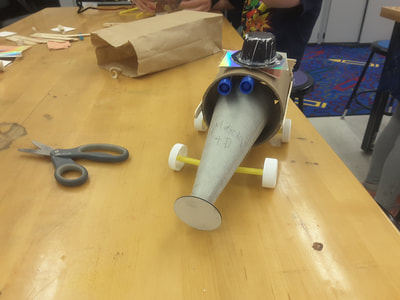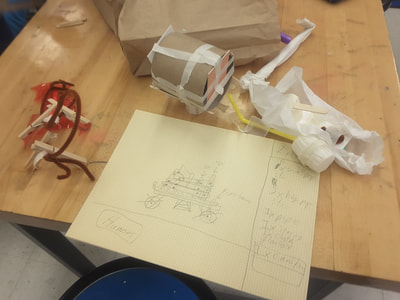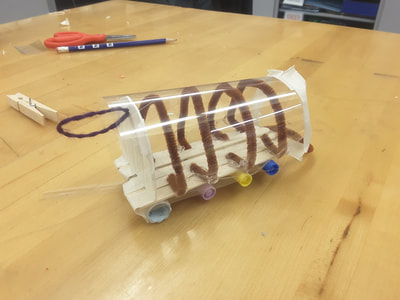4th Grade Design Challenge
4th grade learners were challenged with building a home that was either mobile or portable or both. In this challenge the difference between mobile and portable was that a mobile living space would have wheels and some sort of power source, and a portable home could be somehow carried and packed up. We talked about portability, mobility, structurally functional, sustainability and how nomadic peoples designed portable homes.
They were given a set of criteria for their build, given the option to work collaboratively- with a partner-or by themselves, and several class periods to build. Collaborative building is working together to design but building separately, or each building a part that goes together at the end. The materials offered presented another challenge to them as they needed to consider how these recyclable materials could be used to depict their design. At the end of the build, they completed a display card for their build that describes what they built, what it does, and how it is powered. They then chose a spot in the library to display their work. To wrap up the project learners then participated in a NearPod assessment. Nearpod is an application available through the district and is a versatile interactive tool. Slides and results can be seen below.
They were given a set of criteria for their build, given the option to work collaboratively- with a partner-or by themselves, and several class periods to build. Collaborative building is working together to design but building separately, or each building a part that goes together at the end. The materials offered presented another challenge to them as they needed to consider how these recyclable materials could be used to depict their design. At the end of the build, they completed a display card for their build that describes what they built, what it does, and how it is powered. They then chose a spot in the library to display their work. To wrap up the project learners then participated in a NearPod assessment. Nearpod is an application available through the district and is a versatile interactive tool. Slides and results can be seen below.
The whole 4th grade's finished works can be found on display in the school library as well as on their class website found by clicking the button below. Also found below is a link to assessment tools (this is where you will find the NearPod information) and data for this project and the unit standards and goals.
| lesson_plan_4th_grade_niwot.doc | |
| File Size: | 96 kb |
| File Type: | doc |
Your browser does not support viewing this document. Click here to download the document.
Your browser does not support viewing this document. Click here to download the document.
Your browser does not support viewing this document. Click here to download the document.



